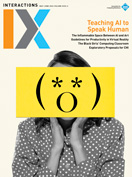Authors:
Dougie Mann, Steve Benford, Adrian Hazzard, Alan Chamberlain, Dimitri Darzentas, Juan Avila, Paul Tennent, Joe Marshall, Pat Brundell, Brendan Walker, Andreas Krauss, Tim Moesgen, Lennart Otte
TypeCase is a keyboard that has just five buttons rather than 50. Instead of typing each key individually, you press chords, just like on a guitar. Built right into a phone case, it allows you to type without looking, with only one hand—even in your pocket. Designed with amputees and hemiplegics in mind, it simplifies a traditional keyboard down to a beautifully intuitive and effortless interaction.
Furthermore, it helps people with visual impairments to type and read: TypeCase uses haptics in the buttons like a digital braille, offering the visually impaired a discrete alternative to the more stigmatizing voice-to-text methods.
https://www.youtube.com/watch?v=VK623GC4FzQ&frags=pl%2Cwn
Dougie Mann, Royal College of Art & Imperial College London
[email protected]
 |
Product design of TypeCase, showing the bare electronics underneath. TypeCase provides text entry through chord-like button presses. |
Named after the Irish bard Turlough O'Carolan, the Carolan Guitar is a roving collector and teller of stories. Scanning its decorative inlay (Artcodes) or playing fragments of music (Muzicodes) conjures up stories from its digital footprint of how it was made, where it has been, and who has played it. From a research perspective, Carolan is an "accountable artifact," a physical object that can be easily connected to multiple layers of digital content so that it can tell different stories to different people in different contexts. From an impact perspective, it is a hybrid product that blends goods, services, and experiences to enhance provenance, utility, and personal meaning.
Greenhalgh, C., Benford, S., and Hazzard, A. and Chamberlain, A. Playing fast and loose with music recognition. Proc. of the 2017 CHI Conference on Human Factors in Computing Systems. ACM, New York, 2017, 4302–4313.
Benford, S., Hazzard, A., Chamberlain, A., Glover, K., Greenhalgh, C., Xu, L., Hoare, M., and Darzentas, D. Accountable artefacts: The case of the Carolan guitar. Proc. of the 2016 CHI Conference on Human Factors Factors in Computing Systems. ACM, New York, 2016, 1163–1175.
https://www.nottingham.ac.uk/research/groups/mixedrealitylab/
https://youtu.be/GwgnAB5tq1U - laser etching Carolan's front
https://youtu.be/nXnWJE65Mk - Remi Harris plays Carolan
https://youtu.be/eS4PU_Rl7vQ - Tim Edey performs with Carolan on stage
Steve Benford, Adrian Hazzard, Alan Chamberlain, Dimitri Darzentas, and Juan Martinez Avila, The University of Nottingham
[email protected]
 |
(Left) Carolan's unusual removable sound-hole featuring a scannable Artcode; (Right) Scanning an Artcode that is physically cut into Carolan's soundboard. |
 |
Capturing Carolan's voice in the recording studio. |
Devised by artist Brendan Walker, VR Playground is an interactive artwork that has toured globally, reaching over 15,000 participants to date. Riders get to experience four different virtual worlds that are overlaid on a playground swing. The physical sensation of swinging is visually amplified and distorted to deliver various thrilling sensations. From a research perspective, VR Playground provides an example of a visual-kinaesthetic experience. From an impact point of view, it shows how to overlay swing rides—and maybe other forms of movement—with virtual experiences.
Tennent, P., Marshall, J., Brundell, P., Walker, B., and Benford, S. Abstract machines: Overlaying virtual worlds on physical rides. Proc. of the 2019 CHI Conference on Human Factors in Computing Systems. ACM, New York, 2019, Article 4; https://doi.org/10.1145/3290605.3300811
Tennent, P., Marshall, J., Walker, B., Brundell, P., and Benford, S. The challenges of visual-kinaesthetic experience. Proc. of the 2017 Conference on Designing Interactive Systems. ACM, New York, 2017, 1265–1276.
https://www.nottingham.ac.uk/research/groups/mixedrealitylab/
http://thrilllaboratory.com/vrplayground-background/
https://www.youtube.com/watch?v=Yn0O7XaZdg8
Paul Tennent, Joe Marshall, Patrick Brundell, Brendan Walker, and Steve Benford, The University of Nottingham
[email protected]
 |
The wheelchair-accessible version of VR Playground. |
 |
High Roller, one of VR Playground's four virtual worlds. |
Even though it is no secret that physical training enhances one's health, many still lack intrinsic motivation to work out consistently. Drawing on this issue, we designed an interactive barbell disk: BRIAN. Based on the famous memory game Simon Says, BRIAN gamifies barbell training by demanding both the user's physical strength and cognitive skills. The disk is connected to an app that shows a random order of colors. Each color is linked to a barbell exercise. The players should execute these exercises in the order in which they are presented on the app. If the exercise is done right, players proceed to the next level.
https://www.behance.net/gallery/53452095/Brian-Interactive-Sport-Device
Andreas Krauss, University of Applied Sciences Osnabrück
[email protected]
Tim Moesgen, University of Applied Sciences Osnabrück
[email protected]
Lennart Otte, University of Applied Sciences Osnabrück
[email protected]
BRIAN gamifies barbell training by demanding both the user's physical strength and cognitive skills.
 |
The sports device is connected to an app that displays the game mode. |
 |
Electronics and sensors are embedded in one of the weights. |
©2019 ACM 1072-5520/19/07 $15.00
Permission to make digital or hard copies of all or part of this work for personal or classroom use is granted without fee provided that copies are not made or distributed for profit or commercial advantage and that copies bear this notice and the full citation on the first page. To copy otherwise, to republish, to post on servers or to redistribute to lists, requires prior specific permission and/or a fee.
The Digital Library is published by the Association for Computing Machinery. Copyright © 2019 ACM, Inc.







Post Comment
No Comments Found